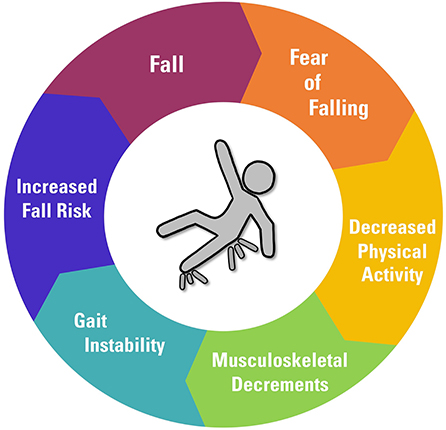Get This Report about Dementia Fall Risk
The smart Trick of Dementia Fall Risk That Nobody is Talking About
Table of ContentsTop Guidelines Of Dementia Fall Risk7 Easy Facts About Dementia Fall Risk ShownWhat Does Dementia Fall Risk Do?Dementia Fall Risk for Beginners
A fall risk analysis checks to see just how most likely it is that you will fall. It is primarily provided for older grownups. The evaluation usually includes: This includes a series of inquiries concerning your general health and wellness and if you've had previous falls or problems with equilibrium, standing, and/or strolling. These devices check your strength, equilibrium, and stride (the means you stroll).Treatments are referrals that may reduce your danger of dropping. STEADI includes 3 actions: you for your risk of dropping for your danger variables that can be improved to attempt to avoid drops (for instance, equilibrium issues, impaired vision) to decrease your danger of falling by using efficient approaches (for example, supplying education and learning and resources), you may be asked several questions including: Have you fallen in the previous year? Are you worried regarding falling?
After that you'll take a seat again. Your supplier will check how much time it takes you to do this. If it takes you 12 secs or more, it may suggest you go to higher risk for an autumn. This test checks toughness and equilibrium. You'll rest in a chair with your arms went across over your chest.
Move one foot midway ahead, so the instep is touching the huge toe of your various other foot. Relocate one foot totally in front of the other, so the toes are touching the heel of your various other foot.
The 9-Second Trick For Dementia Fall Risk
The majority of falls occur as an outcome of several adding aspects; as a result, managing the danger of dropping starts with recognizing the elements that add to drop threat - Dementia Fall Risk. Some of the most pertinent danger variables consist of: History of previous fallsChronic clinical conditionsAcute illnessImpaired stride and equilibrium, lower extremity weaknessCognitive impairmentChanges in visionCertain risky medications and polypharmacyEnvironmental variables can additionally boost the threat for falls, including: Inadequate lightingUneven or harmed flooringWet or unsafe floorsMissing or harmed handrails and order barsDamaged or improperly fitted devices, such as beds, mobility devices, or walkersImproper use of assistive devicesInadequate guidance of the people staying in the NF, including those who exhibit hostile behaviorsA successful fall danger administration program needs a thorough scientific assessment, with input from all members of the interdisciplinary team

The care plan ought to also include interventions that are system-based, such as those that promote a safe setting (proper lights, hand rails, order bars, etc). The performance of the treatments ought to be examined regularly, and the treatment plan revised as necessary to reflect changes in the loss risk assessment. Implementing an autumn danger administration system utilizing evidence-based ideal technique can minimize the occurrence of drops in the NF, while restricting the possibility for fall-related injuries.
Dementia Fall Risk Fundamentals Explained
The AGS/BGS standard advises evaluating all adults aged 65 years and older for fall threat every year. This screening contains asking people whether they have fallen 2 or more times in the past year or looked for clinical focus for an autumn, or, if they have actually not dropped, whether they really feel unsteady when strolling.
Individuals that have actually dropped when without injury ought to have their balance and stride evaluated; those with stride or balance abnormalities need to receive additional assessment. A background of 1 loss without injury and without gait or balance troubles does not call for further assessment past ongoing annual fall threat testing. Dementia Fall Risk. A fall risk evaluation is required as part of the Welcome to Medicare assessment

Excitement About Dementia Fall Risk
Recording a drops background is among the top quality indicators for fall prevention and management. An essential part of risk analysis is a medicine evaluation. A number of classes of medicines enhance loss risk (Table 2). Psychoactive drugs specifically are independent forecasters of drops. These medicines often tend to be sedating, change the sensorium, and impair equilibrium and stride.
Postural hypotension can typically be relieved by reducing the dose of blood pressurelowering medicines and/or quiting medicines that have orthostatic hypotension as an adverse effects. Use above-the-knee assistance pipe and copulating the head of the bed raised might likewise minimize postural reductions in blood stress. The recommended aspects of a fall-focused checkup are revealed go right here in Box 1.

A Yank time better than or equal to 12 seconds suggests high fall risk. Being unable to stand up from a chair of knee height without using one's arms suggests boosted fall threat.